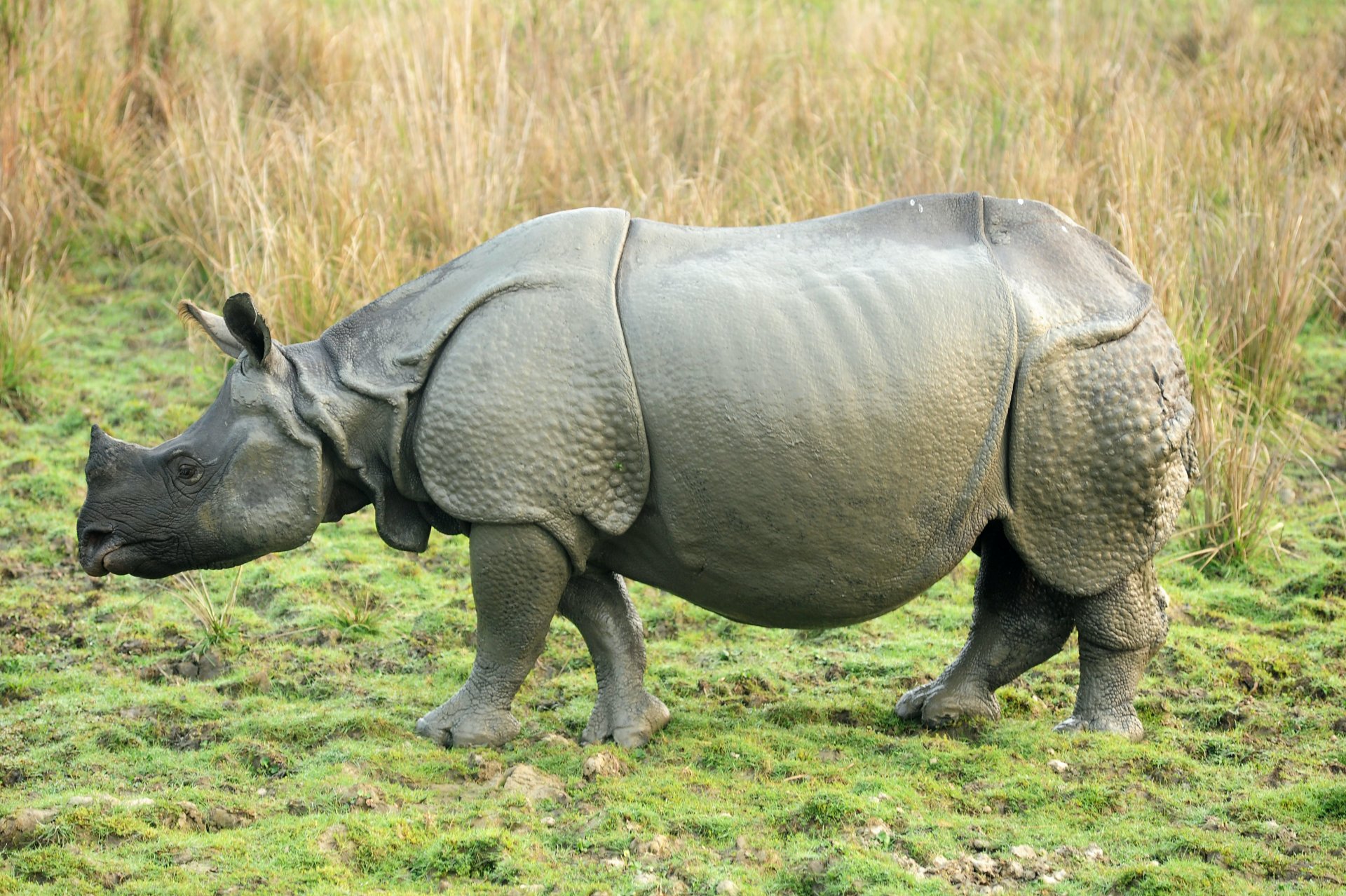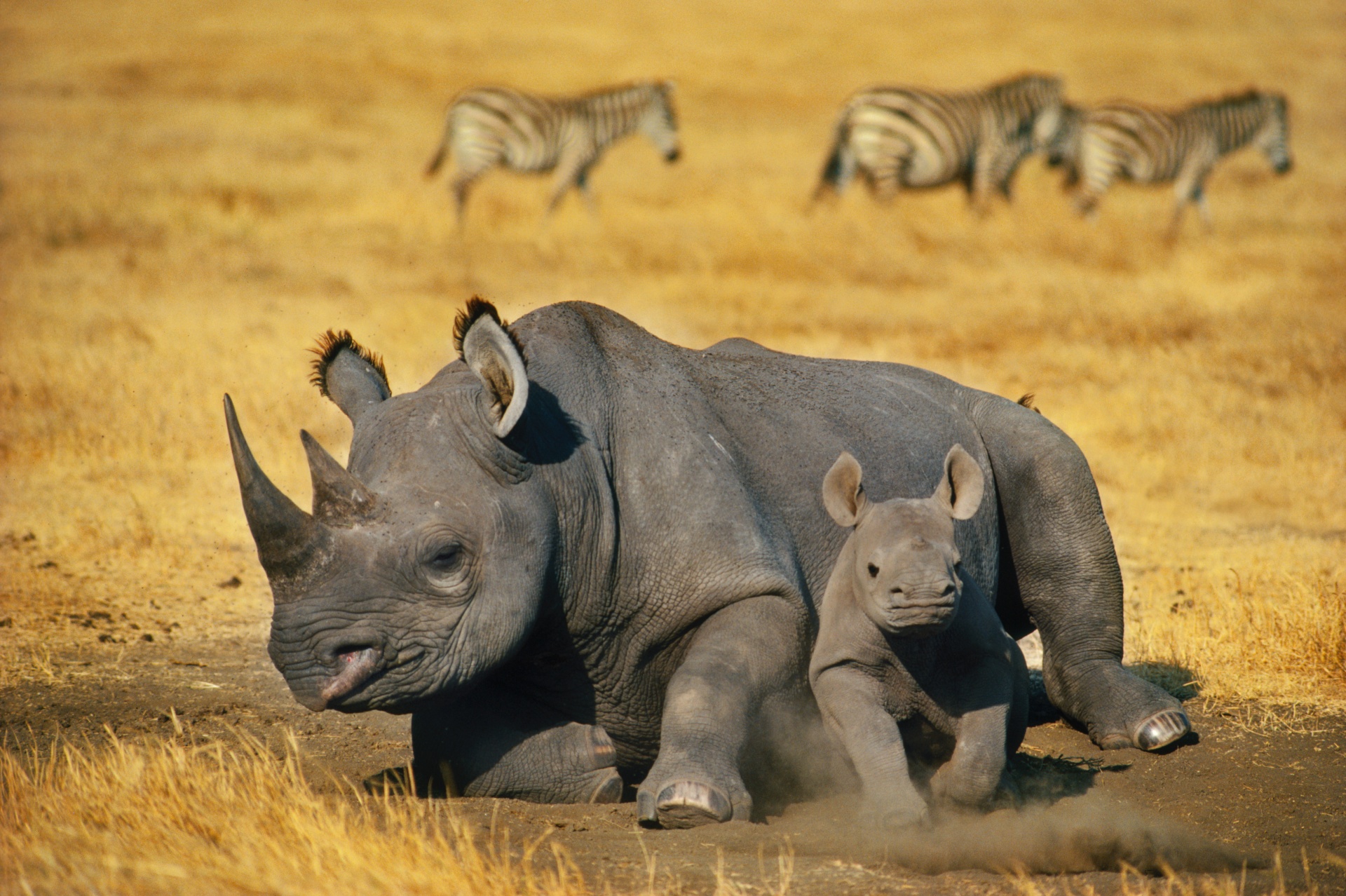Did you know that every 12 hours there is a rhino poached in Africa? Did you know that among the five species of rhinos in the world there are two that have fewer than 80 individuals left? On September 22, the world rhino day, the call to protect this beautiful and rare animal has been raised again with the theme "keep the five alive."
In the last decade, at least 9,442 African rhinos have been lost to poaching. There are five species of rhino: the white and black rhinos in Africa, and the greater one-horned, Javan and Sumatran rhinos from Asia. The population of both of the Asian species have shrunk to less than 80 individuals due to severe poaching.
The Javan rhino is probably the rarest large mammal on earth. It is estimated only 72 of them left in the world. This species only exists in a single population in Ujung Kulon peninsular, western Java, Indonesia. The wild population here has recovered quite well from less than 30 individuals in 1967 to between 50 and 60 in 1980. The current estimate wild population is between 65 and 68 animals. They are solitary animals for most of their lives except for mothers with calves.
The Sumatran rhino is the smallest rhino species in the world. It is also facing looming threat from poaching. Some research states that there are less than 80 left in the wild. They were once found across Bhutan, northeast India, southern China, Cambodia and Thailand, now they are only restricted to a few locations in Sumatra and Borneo in Indonesia. This species likes to wallow, it spends most of its day sitting in pond or mud to cool itself down.

A greater one-horned rhino. /VCG
A greater one-horned rhino. /VCG
The greater one-horned is the second-largest rhino in the world after the white rhinos. They are excellent swimmers and can dive underwater. Found in India and Nepal, they have an estimated population of around 3,580. Since they live in areas with very fertile soil, their conflict between human farming activities never cease. Human harassment has also been the biggest threat to this species.
The largest rhino species in the world, the white rhino is also known as the square-lipped rhino. It is found mostly in South Africa, with smaller translocated populations found in Kenya, Namibia and Zimbabwe. Although is is called "white rhino", there is in fact no color difference in skin between the black and white rhinos, which are both dark gray. Their number is estimated between 17,212 and 18,915.

A black rhino and her calf. /VCG
A black rhino and her calf. /VCG
The black rhinos are "night crawlers." They are active during night when they do most of the foraging and drinking. They are found throughout southern and eastern Africa, including Kenya, Tanzania, Namibia, South Africa and Zimbabwe. The biggest difference in appearance between a black and a white rhino is that black rhinos have a hooked lip instead of a flat-based lip. The estimated population is between 5,366 and 5,627.
For all five species, poaching and habitat loss still remain the biggest threats to their shrinking population. It is in our hand to save this species by raising awareness in tackling against illegal trading and poaching, and support the conservation efforts around the globe.
(Statistics from "Save the Rhino International." All photos via VCG.)
(If you want to contribute and have specific expertise, please contact us at nature@cgtn.com.)